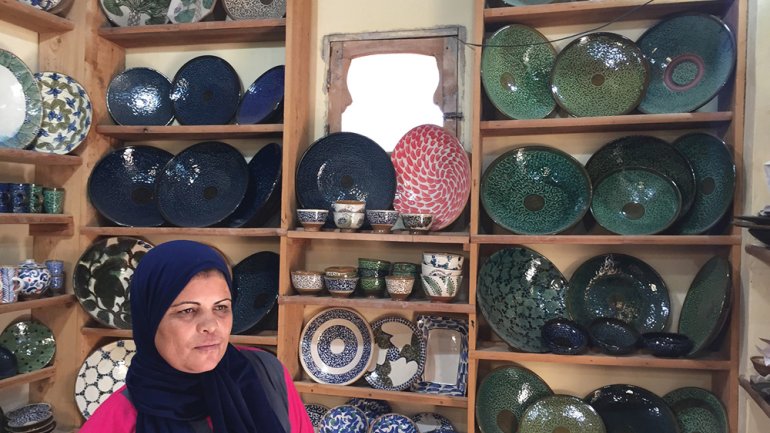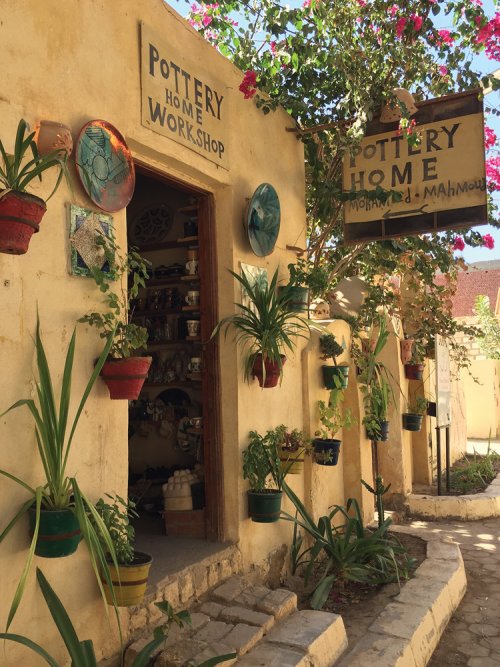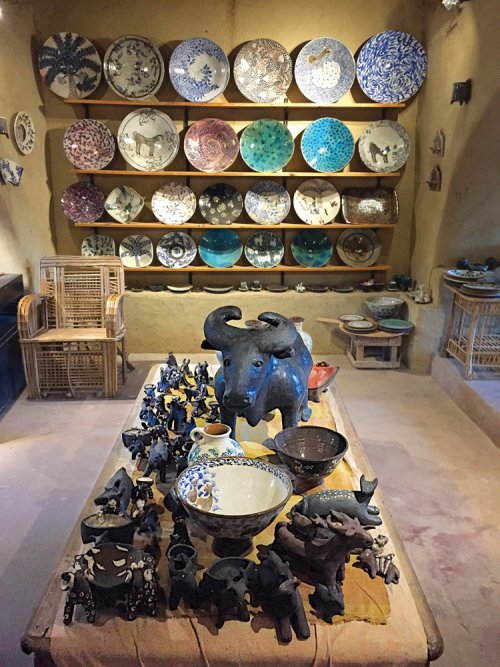New Generation
New Generation
A generation ago, young people in Tunis, a village in Egypt’s lush Fayoum oasis in the Sahara Desert, had few options but to work in the surrounding farmland or set out for a job in Cairo some 80 miles north.
But in 1989, Swiss potter Evelyne Porret, who had made Tunis her home, started a pottery school for children, inspired by their knack for making animal figures out of mud. A decade later, two of her students opened ceramics workshops, and a new village economy was born.
Children still tend fields rimmed with date palms. But now you’re just as likely to find them in one of the workshops, wedged into a potter’s bench or drawing on a clay bowl. And increasingly, the students of Porret’s first students are opening their own workshops – six last year alone – as the second generation of potters learn the craft.
The village is now an in-vogue destination for ceramics in Egypt, with 22 workshops and counting, the annual Tunis Pottery and Handicrafts Festival that draws a few thousand people each fall, and a small but expanding roster of eco-lodges and restaurants.
“In the end, Tunis got known because of its pottery,” says Ibrahim Abla, who manages his family’s Fayoum Art Center, home to a museum of Egyptian magazine cartoons dating back a century, visual arts workshops, and Friday-night film screenings. “Ninety-five percent of people who come to visit Tunis, they heard about pottery and pottery workshops, and they want to come and see.” What they will find are plates, bowls, cups, and platters often adorned with local plants and animals – date palms, camels, and migratory birds – in vivid blue, deep green, and bone white. The wares are single-fired, a technique that harkens to Islamic-era pottery.
They’ll also find stunning surroundings. The village is a patchwork of dirt- and stone-paved lanes, with brightly colored murals and domed mud-brick villas and guesthouses. It sits in a vast area of desert flats and sand dunes, a handful of lakes once connected to the Nile, and a nature protectorate that holds a UNESCO World Heritage site where ancient whale vertebrae and other fossils can be found.
Although many workshops have similar pieces crowding shelves and tabletops, each potter maintains a discernible style.
Ibrahim Samir teaches pottery and creates plates with images that echo the famed Fayoum mummy portraits from Egypt’s Roman period of roughly 2,000 years ago. “I go with the energy of the mud,” he says. “This is my heart.”
Mahmoud El Sherif, who’s in his late 30s, opened Tunis’ third pottery workshop in 2004 and now heads the Tunis potters’ association. He gets his inspiration from local plants and animals.
Rawya Abdelkader, the first woman from the village to run her own pottery studio, established her stamp with a motif akin to Arabic calligraphy. The early years were difficult, she says. “When I first started [in 1999], I was afraid and felt insecure being a woman opening a shop in the village.” But as orders for the plates and bowls she sells in Cairo galleries started coming in, her fears disappeared.
Now her daughter, Sara Mohamed, is in her early 20s and showing similar confidence and independence at the workshop she opened with her husband, Ahmed Sayed, last May. The week before the craft festival in November, she was seated at her workbench, kicking the wheel with her right foot to spin the disc under her muddy hands. The couple was ramping up production for the village’s biggest weekend of pottery sales. She shaped lump after lump of clay into cylindrical teacups, churning out 50 an hour.
She started making pottery at age 8, exhibited her work at her mother’s shop at 13, and soon began dreaming of a studio of her own. “I’m very proud,” she says of her accomplishments, resting a hand on her midsection. At the time, she was pregnant with her first child, and perhaps the next generation to carry on the craft she loves.






